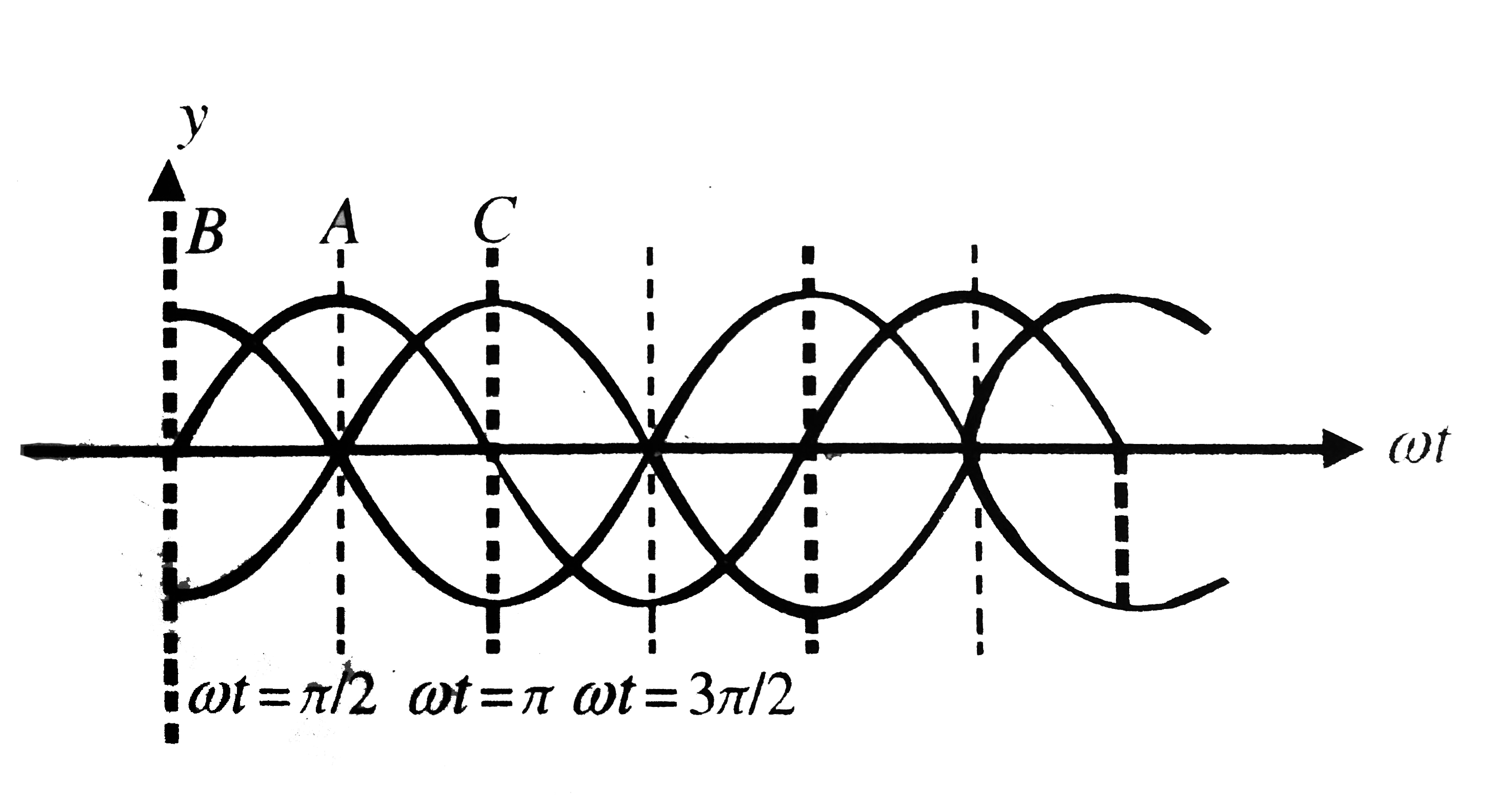Figure given below shows four progressive waves A, B, C and D with their phases expressed with respect to the wave A. It can be calculated from the figure that :-
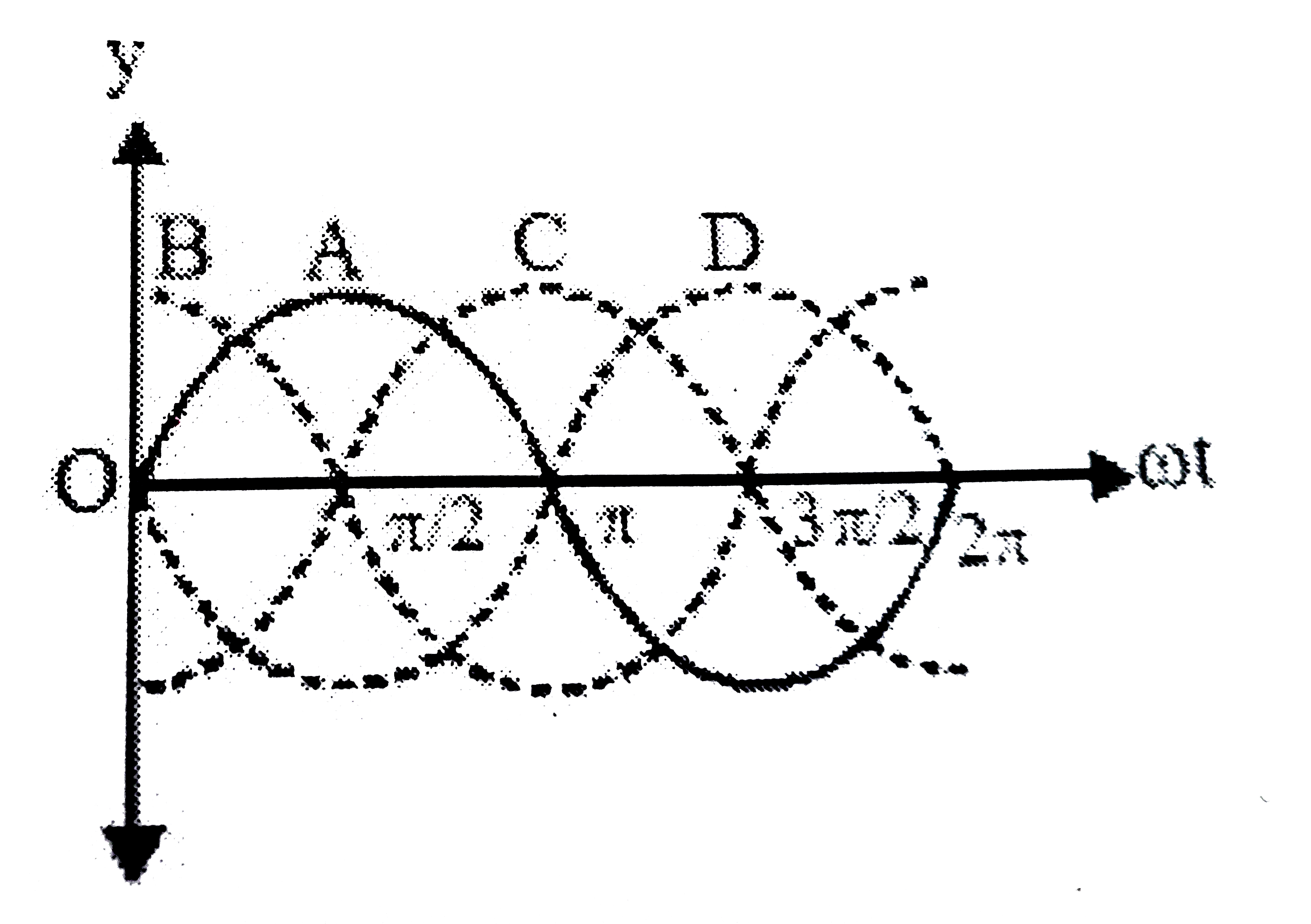
the wave C is ahead by a phase angle of π2and the wave B lags behind by a phase angle of π2
the wave C lags behind by a phase angle of π2 and the wave B is ahead by a phase angle ofπ2
the wave C is ahead by a phase angle of π and the wave B lags behind by a phase angle of π
the wave C lags behind by a phase angle of π and the wave B is ahead by a phase angle of π
The correct Answer is:B
With respect to the wave A wave B is ahead by a phase angle of π2, wave c is lags behind by phase
angle of π2 , wave D has phase difference of π
Topper's Solved these Questions
Similar Questions
Knowledge Check
Three progressive waves A,B,C are shown in the figure
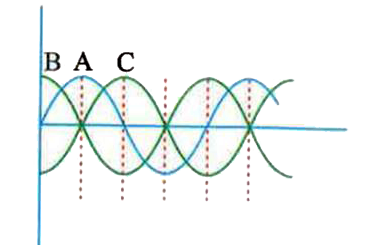
With respect to A, the progressive waveAB lags by π2 and C leads by π2BB lags by π and C leads by πCB leads by π2 and C lags by π2DB leads by π and C lags by πThe figure shows four progressive waves A, B, C 8 l D. It can be concluded from the figure that with respectto wave A:
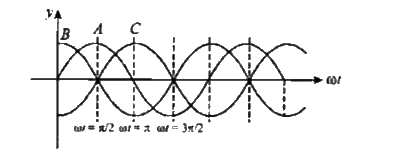 AThe wave C is ahead by a phase angle of π/2 & the waveB lags behind by a phase angle π/2BThe wave C lags behind by a phase angle of π/2 & the wave B is ahead by a phase angle of π/2Che wave C is ahead by a phase angle of π the wave B lags behind by the phase angle of πDThe wave C lags behind by a phase angle of (π)& the wave B is ahead by a phase angle of (π)
AThe wave C is ahead by a phase angle of π/2 & the waveB lags behind by a phase angle π/2BThe wave C lags behind by a phase angle of π/2 & the wave B is ahead by a phase angle of π/2Che wave C is ahead by a phase angle of π the wave B lags behind by the phase angle of πDThe wave C lags behind by a phase angle of (π)& the wave B is ahead by a phase angle of (π)Three progressive waves A,B and C are shown in figure. With respect to wave A
_S01_014_Q01.png) .AThe wave C lags behind in phase by π/2 and B leads by π/2BThe wave C leads in phase by π and B lags behind by πCThe wave C leads in phase by π/2 and B lags behind by π/2DThe wave C lags behind in phase by π and B leads by π
.AThe wave C lags behind in phase by π/2 and B leads by π/2BThe wave C leads in phase by π and B lags behind by πCThe wave C leads in phase by π/2 and B lags behind by π/2DThe wave C lags behind in phase by π and B leads by π
Three progressive waves A,B and C are shown in figure. With respect to wave A
_S01_014_Q01.png) .
.
View SolutionThree progressive waves A,B and C are shown in figure. With respect to wave A
_S01_014_Q01.png) .
.
View SolutionIn the figure three progressive waves are shown. The phases of all are shown with respect to A. From this it is inferred that
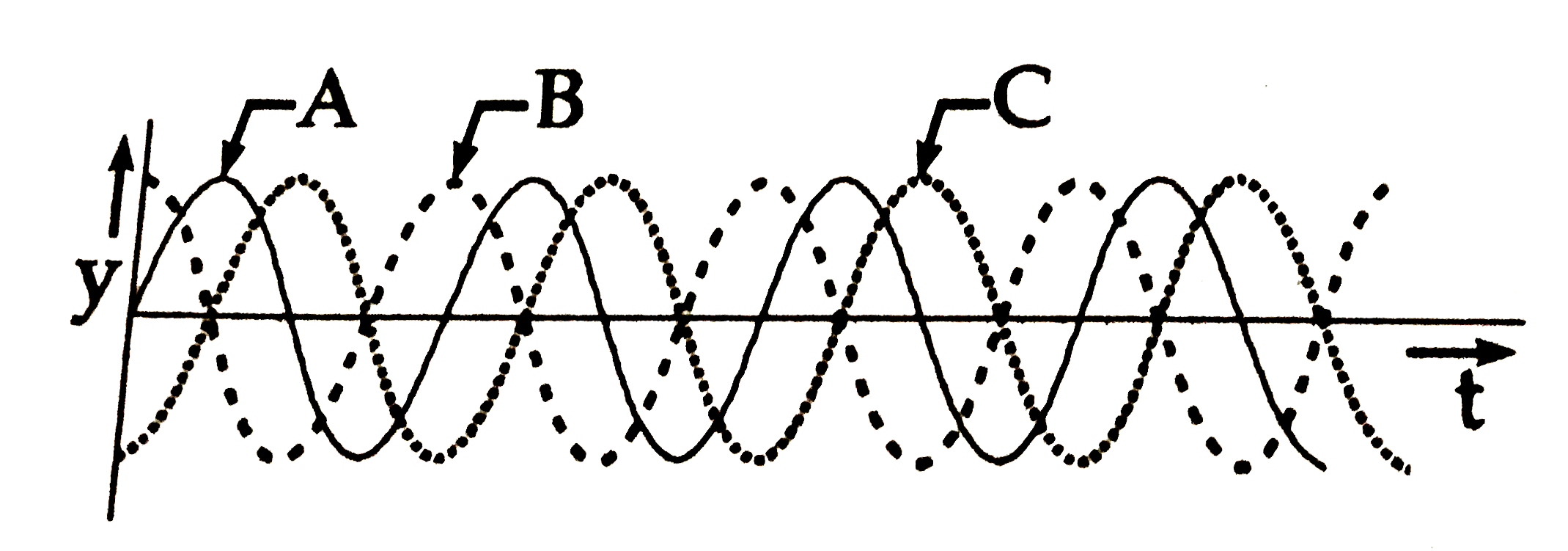
View SolutionFigure shows a sinusoidal wave at a given instant.
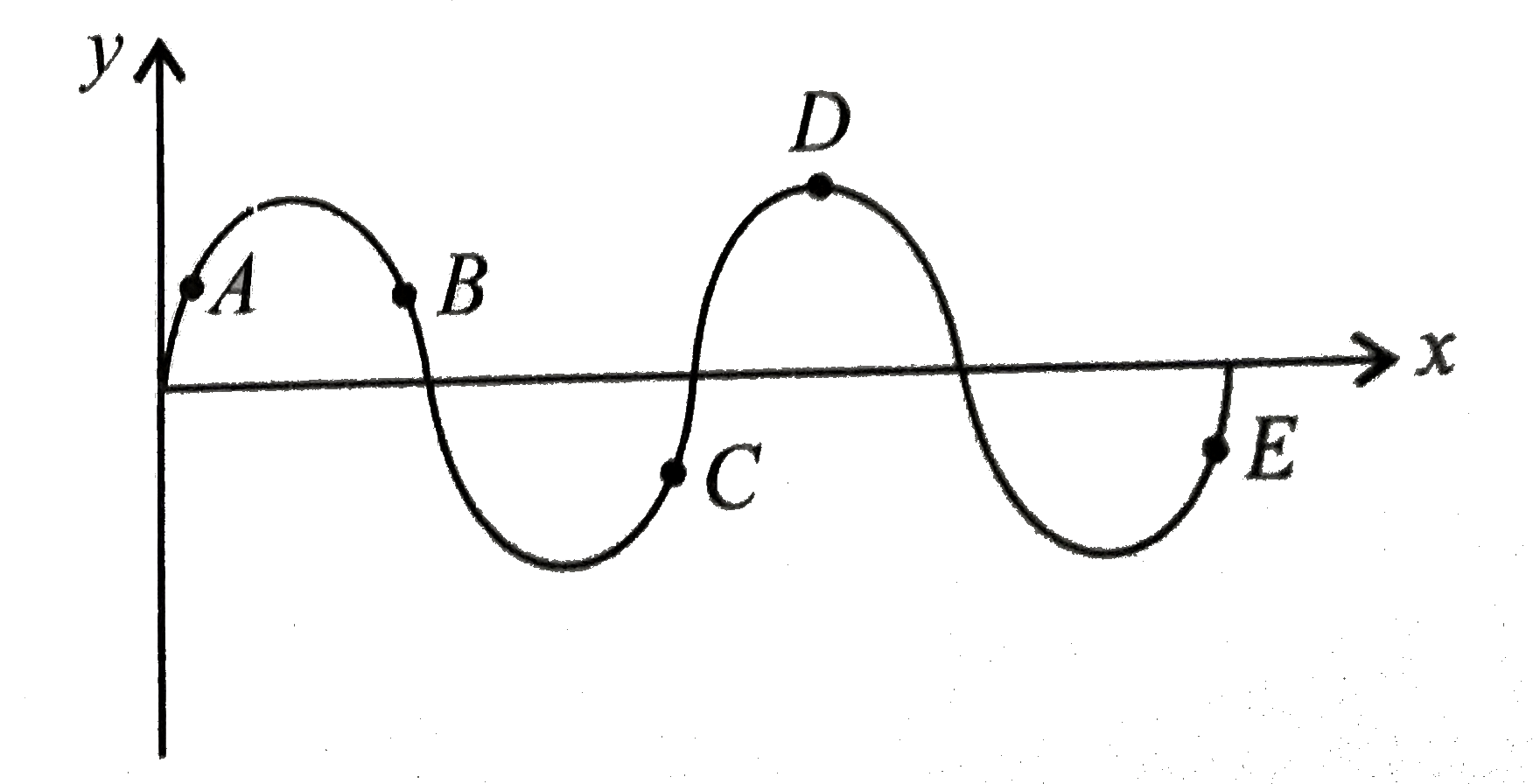
Which points are in phase?
View SolutionFigure shows a sinusoidal wave at a given instant.

Which points are in phase?
View Solution

